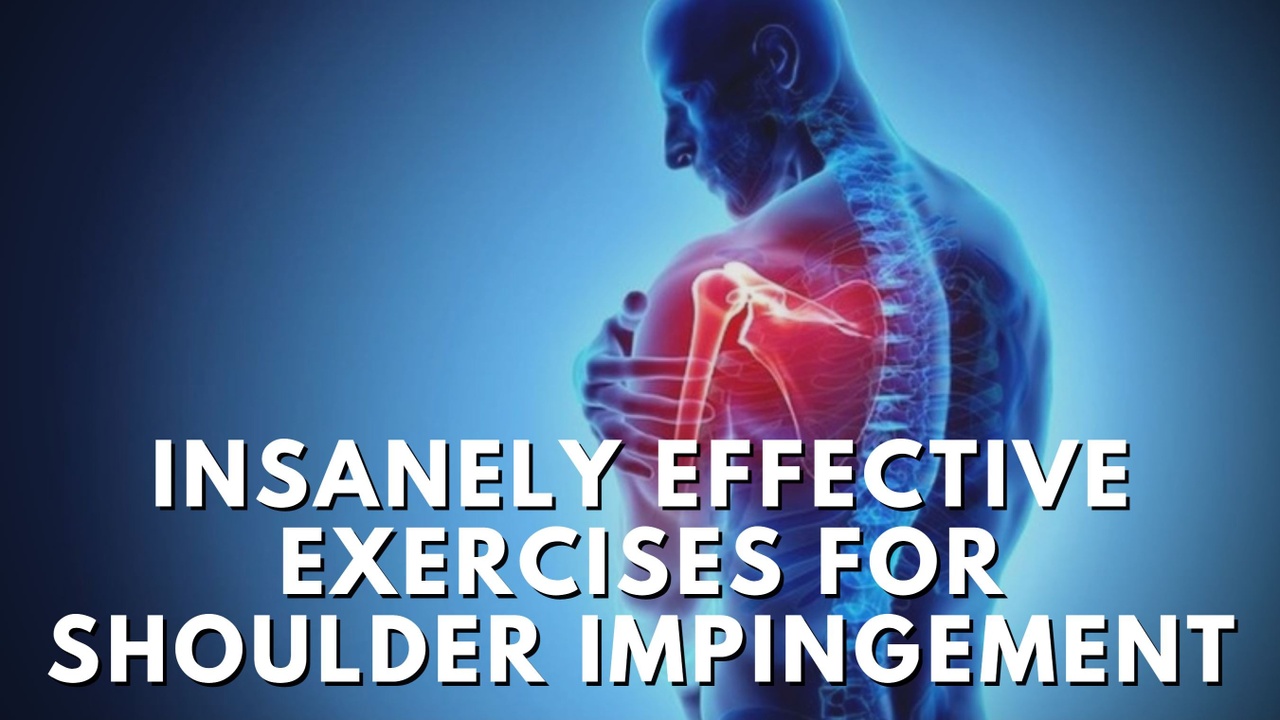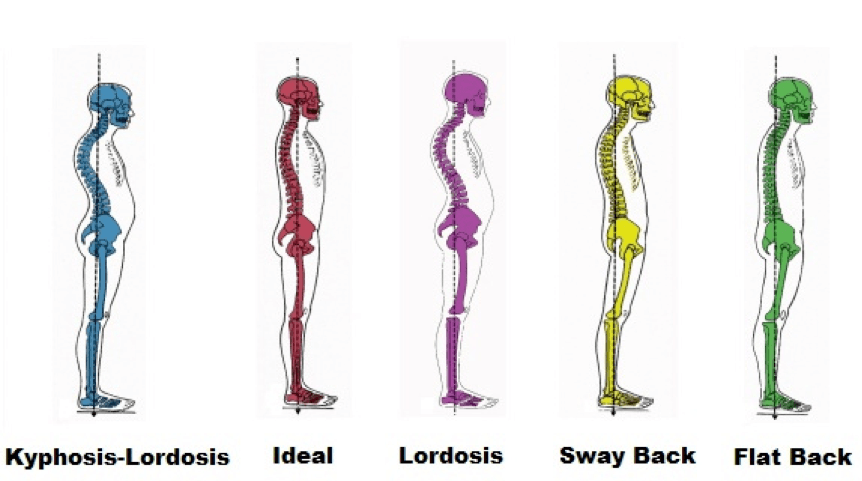Insanely Effective Exercises For Shoulder Impingement: Long-Term Fix
Aug 09, 2021
Shoulder impingement simply sucks. It is one of the most common injuries of the shoulder and can be a challenge to overcome without the right approach.
The good news is, there is a predictable presentation of the shoulder that results in the most common types of impingement. Also, there are effective, proven methods to improve shoulder function long-term.
In this article I will cover:
- The root cause of shoulder impingement
- The steps for improving shoulder health
- Exercises for restoring function
How Shoulder Impingement Develops
The human body is seeking balance in posture and movement. And honestly, it is inherently kind of lazy. Our bodies have evolved to learn how to take the path of least resistance for being as efficient as possible. And all of this happens subconsciously to also preserve energy.
Think of how we evolved: For the overwhelming majority of our existence as a species, we didn't know where our next meal would come from. We needed to conserve energy as best we can. The way we can do this in upright posture and movement is create a straight line down the center of our body for an even center of mass.
Take a look at all of the following spine curves. Some we would call good posture, others not so much. What is the common theme?

The spine curves all result in an even line going down the midline of our body. This helps us manage gravity, meaning we don't have to constantly fight ourselves and spend muscular energy keeping ourselves upright. This would be even more metabolically expensive (caloric expenditure) if we needed to do this while we moved as well.
The most common spine presentation with shoulder impingement is one that results in excessive rounding (kyphosis) of the upper body. This results in the shoulders rounding forward:

As a result, the space between the humerus (arm bone) and the space between the head of it and the bone above it (sub-acromial space) becomes constricted.

The Root Cause of Shoulder Impingement
It would be easy to look at shoulder impingement as an isolated shoulder and arm issue, but this is exactly where people tend to go wrong. Shoulder impingement is not just a shoulder issue - it is a ribcage and pelvis issue first and foremost.
When shoulder impingement exists, there is often a degree of Scapular Winging associated with it, which is often the result of a shoulder that is rounded inward and forward:
![Winged Scapula and Shoulder Pain [Case Study] — ONI | Wellington Personal Training Studio](https://images.squarespace-cdn.com/content/v1/592944cb86e6c0040d3c3d27/1535954941442-Y6I3CS64FPIUCFQU93LH/DSC08252-2.jpg)
This is often a result of compression, or tightness of the ribcage on the front side which tightens the pecs and results in the scapula being pulled forward and away from the spine:
Improve Your Breathing for Better Shoulder Health & Function
Now, we could consider doing some pec stretches or "muscle activation" drills for the upper back, but I have seen so much more success with improving ones' breathing pattern. I know this may sound crazy, but hear me out:
When we breathe in, our diaphragm is responsible for expanding our ribcage in every direction and moving our shoulder blades back and down:

Most trainers and physical therapists will give you a few sets of 10 of an exercise to help activate the muscles that stabilize your shoulder blade to pull it back, but what if we retrained your diaphragm to push your shoulder blades back tens of thousands of times per day?
There is nothing wrong with those activation exercises, and they are often necessary, but I really have found that addressing breathing is the essential first step most programs are missing.
Exercises to Fix Shoulder Impingement
Here are three exercises that directly improve your breathing pattern to help fix impingement. I would recommend you pay very close attention to the cues, and do them in the order I lay out here:
Learn to breathe better
Before you do any of the exercises below, watch this video on how to breathe in an easy position. Do not skip this step. It is quite challenging to incorporate breathing into the exercises below without first learning to effectively do it in isolation. If you skip this step, your success rate is likely to be much lower as you'll be thinking too much on the exercises.
1.) Chest Opener (Lat Release)
The lats are muscles that can easily pull the shoulders forward due to their attachment on the arm itself. Releasing them can help open up the chest.
Technique used with permission. Copyright © Postural Restoration Institute®2022. www.posturalrestoration.com
2.) Elevated Rockback Breathing
This exercise teaches air to flow into your chest via gravity. Air is a gas that follows the path of least resistance. If you are facing downward, it will have to travel downward into your chest, especially if you are using the breathing strategy from the first video.
3.) Strengthen The Muscles That Fix Scapular Winging
Now that we've improved our breathing pattern, we can now incorporate that into an exercise that strengthens and recruits the following muscles:
Serratus Anterior
Many people know this muscle as a shoulder protractor, but this muscle is actually one of the primary muscles for holding your scapula on the ribcage throughout Scapulo-Humeral Rhythm.

A Landmine Press is a great activity for this training that, and you can see my extensive guide on those here for more information.
The Long Head of the Triceps
A muscle that is very frequently weak in scapular winging and shoulder impingement. The long head of the triceps attaches the lateral (outer) border of the scapula, meaning that when it contracts, it will pull the shoulder blade down and back to pull the shoulder back with it:
Here is an exercise you can do that targets exactly that while also helping to cement the breathing strategy we have been working on:
The Middle Traps & Rhomboids
These muscles help pull the scapula back on the ribcage. Strengthening these (in a good position) is very helpful at this point

Here is a cable row variation you can use to help strengthen these muscles:
The Low Traps
The Low Traps act to help upwardly rotate the scapula as we reach our arm overhead, but also help stabilize the scapula on the ribcage. The upper traps also help with this, but the low traps are often weaker in most people.

If you want an idea of the aforementioned muscles' lines of pull on the scapula, this image is very helpful for visualizing why we are targeting them:
![Improve Scapula Control – [𝗣]𝗥𝗲𝗵𝗮𝗯](https://theprehabguys.com/wp-content/uploads/2019/10/scaptipping-1.jpg)
Here is a drill you can do to target those Low Trap fibers for their specific purpose in overhead movement:
Technique used with permission. Copyright © Postural Restoration Institute®2022. www.posturalrestoration.com
Summary
Improving your breathing strategy will give you the best long-term results. We can try to stretch or force (strengthen) our way out of shoulder impingement, but we can also educate the body to push air into the right places to put the shoulder blade in a better position to be strengthened in the first place.
I recommend doing these exercises in the order presented twice a day, once in the morning and once at night, for 2 sets of 5 breath cycles each. A good rule of thumb is a 5 second gentle exhale through the mouth and a 5 second gentle inhale through the nose with each rep. For the triceps exercise, use a light band or cable machine at your gym for 2-3 sets of 15 reps daily.
"Conor, What If I Want More To Fix My Shoulders?"
If you've read through this and thought, "Conor, this sounds great, but how can I ensure consistent and structured progress?" or "How about a step-by-step guide to improve my shoulders?", then I've got just the thing for you.
Introducing the THE NO B.S. GUIDE TO SHOULDER HEALTH. It’s designed with the clarity and depth I bring to all my content. With just 15 minutes a day, I’ve streamlined a program tailored for optimal shoulder health, catering to those even with the busiest of schedules.
Why go through tons of exercises, hoping one sticks, when you can follow a methodical program that progresses with you, ensuring not just mobility, but strength through that new range? With detailed 4K videos to guide you, it's almost like having me right there coaching you in real time.
Shoulders are more than just about posture; they're about life quality. The freedom to move, express, and live without restrictions. It’s time to invest in your shoulder health and reclaim that freedom. Check out the NO B.S. GUIDE and start feeling better in no time!
https://www.conorharris.com/shoulder-health-program
Best,
Conor
Don’t miss out on free education
Join our email list to receive exclusive content on how to feel & move better.



